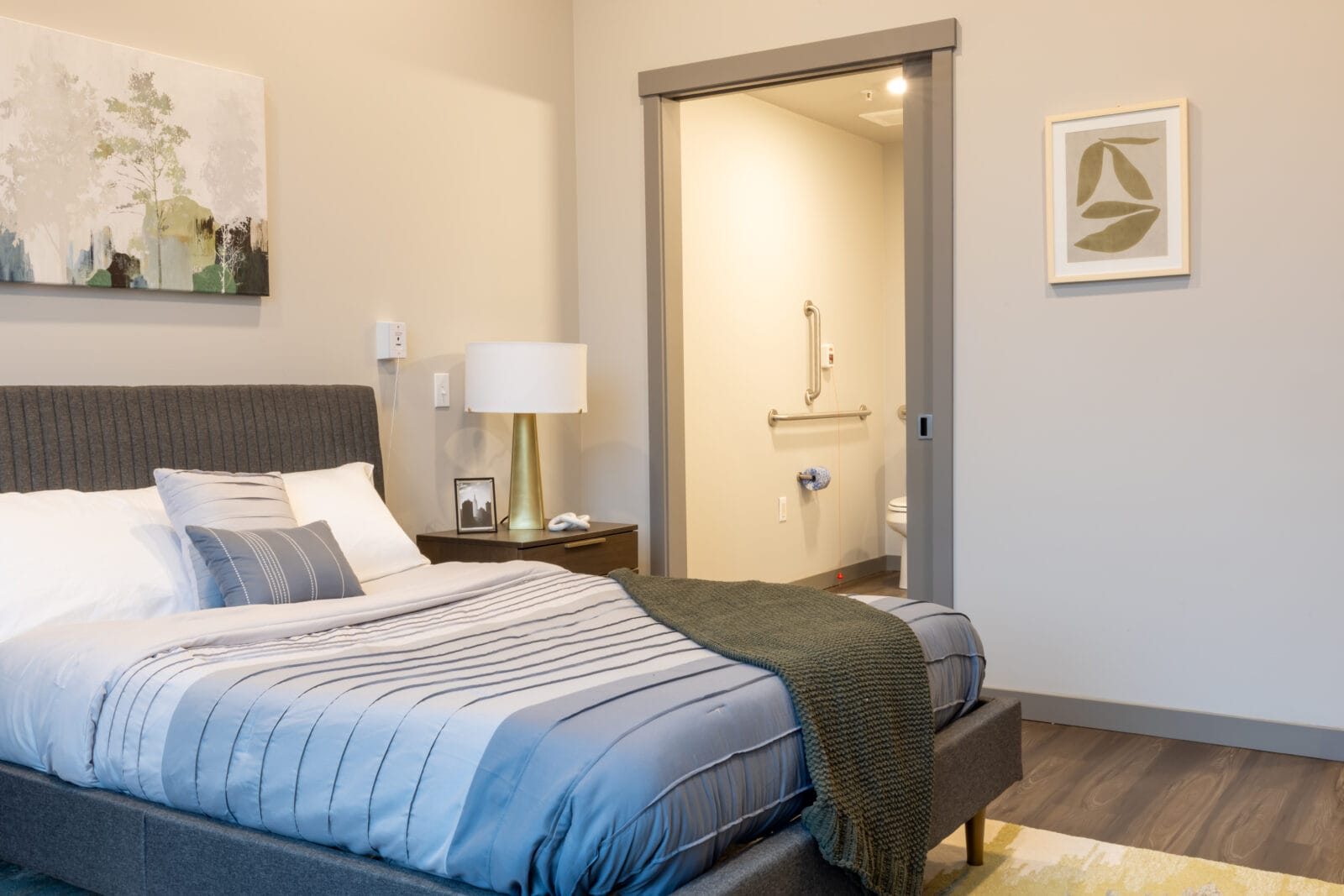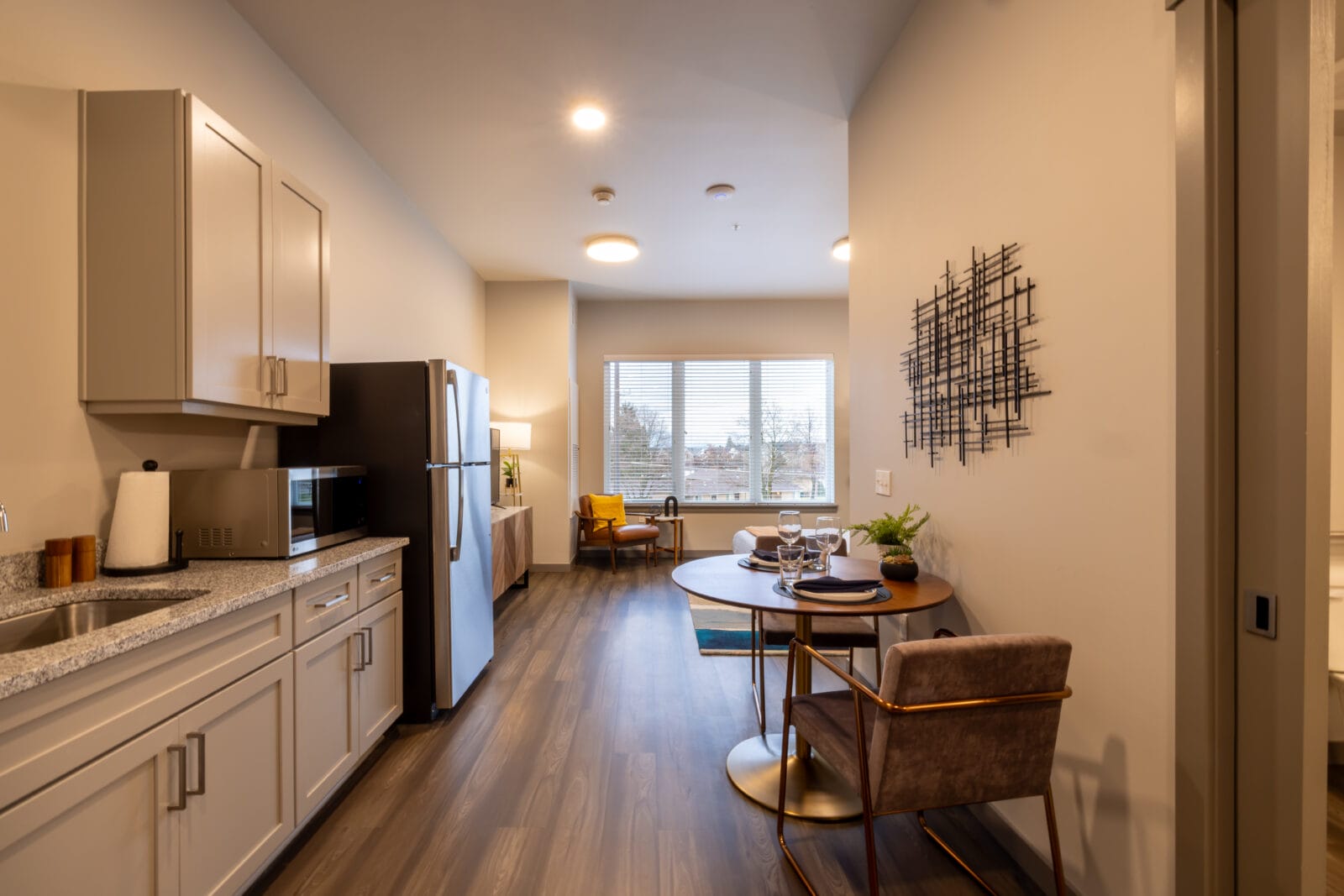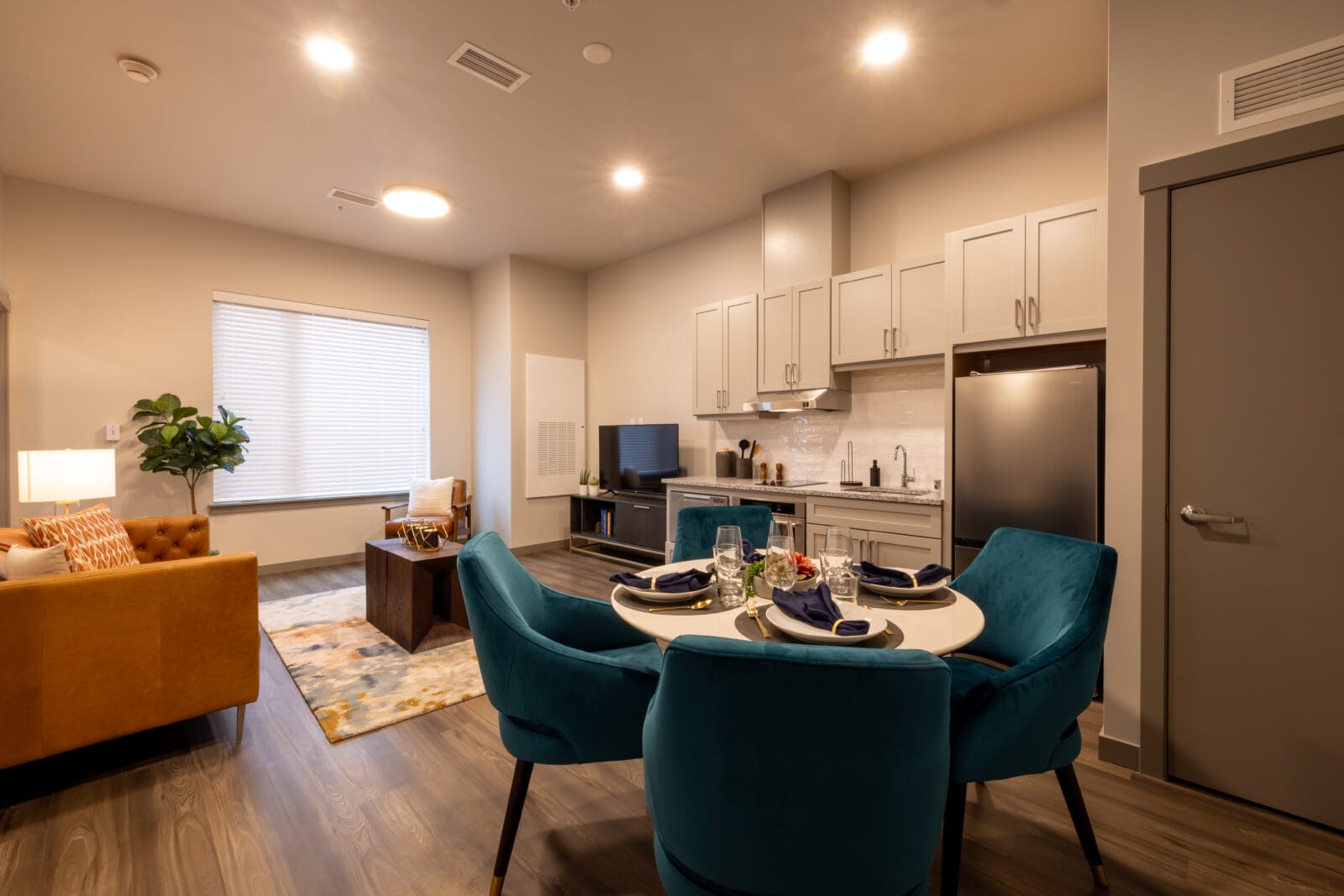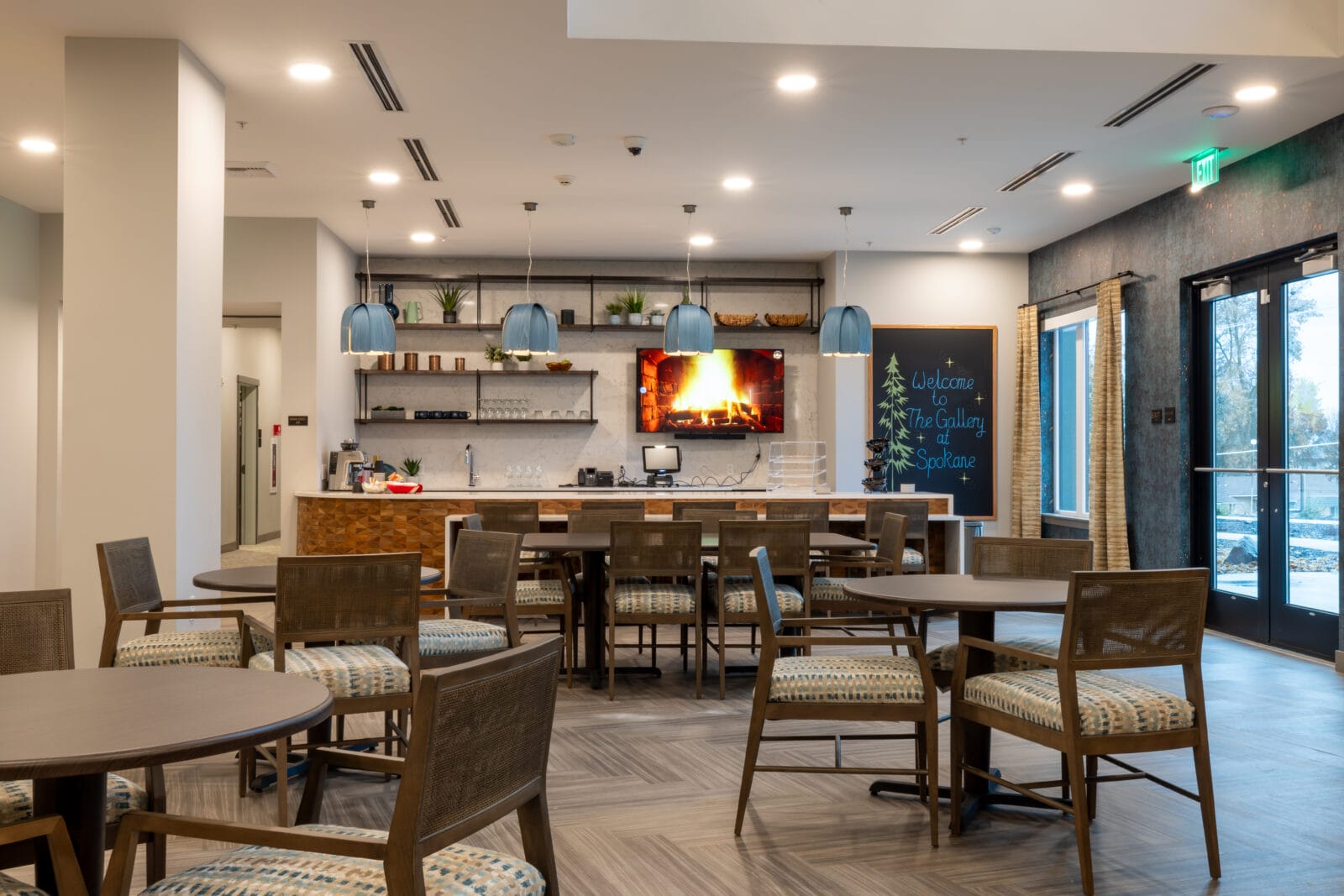Senior living communities are an increasingly popular choice for today’s senior citizens, and it’s easy to see why. They reduce feelings of loneliness and isolation, provide lots of fun activities and opportunities for new friendships, and eliminate tiresome household chores like cooking and cleaning. But “senior living” is a broad category encompassing a wide range of care levels, types of communities, and associated costs. It can be difficult to figure out which type best fits your needs. That’s why we’ve created this Ultimate Guide to Senior Living. We hope this helps you find the best senior living community for you or your loved one.
In this guide, we’ll show you the different types of senior living communities, including 55+ communities, independent living, assisted living, memory care, and skilled nursing and rehab. We’ll also share the pros and cons of senior living communities, the cost and payment options, and finally, the process of choosing the right community for you. Wondering what type of community is right for you or your loved one? Read on to find out all the information you need to make this important decision.
What is a Senior Living Community?
A senior living community is a building or neighborhood of exclusively older adults, typically over the age of 55. This is a broad category that can include a lot of options, including apartment buildings, townhomes, and detached homes in a designated neighborhood. Senior living communities offer varying levels of care, from fully independent communities to skilled nursing care. Most communities include activities, amenities, housekeeping, and meals with the monthly rent or room-and-board price.

Crafts are a staple of any great senior living community.
What are the different types of Senior Living Communities?
There are 5 main categories of senior living communities, including 55+ communities, independent living, assisted living, memory care, and skilled nursing. We will briefly describe each type of community so you can get an idea of which would best fit your or your loved one’s needs.
55+ communities or “active adult” communities
55+ communities require residents to be over the age of 55. Typically, these communities have one-or two-bedroom apartments or townhomes that are accessible and near others of a similar age or stage of life. These communities don’t provide care and may or may not provide meals, housekeeping, activities, or amenities.
Independent Living Community
An Independent Living Community is a neighborhood of apartments, condominiums, or townhomes designed for older adults who still want to live independently, but prefer the benefits of a senior community setting. These benefits may include housekeeping and laundry services, outdoor space maintenance, dining hall and prepared meals, transportation, community entertainment and activities, pools, gyms, security, and more. Find out more about independent living in our Ultimate Guide to Independent Living.
You may see some communities with “Independent Plus” care. This is somewhere in between independent living and assisted living. It’s a good choice for seniors who are looking to maintain the most independence possible, but may need occasional help or minor assistance in just one or two areas.
Assisted Living
An Assisted Living Community is similar to an independent living community, with the same benefits, like housekeeping, meals, transportation, activities, and amenities. However, these communities also offer in-house help with daily activities like bathing, dressing, mobility, and medication management. Learn more in our Ultimate Guide to Assisted Living.
Memory Care Community
A Memory Care Community is a type of Assisted Living Community specifically designed for individuals with dementia, Alzheimer’s, other forms of memory loss, or cognitive decline. This usually includes increased security and supervision, as well as assistance with activities of daily living and dementia-specific care. Check out our Ultimate Guide to Memory Care.
Skilled Nursing & Rehab
Skilled Nursing & Rehab Care is intended for seniors who need a lot of medically advanced care. It is the most care you can receive outside of a hospital. Skilled nursing communities are staffed with certified nurses and other medical professionals, including physical therapists and occupational therapists, who provide rehab (rehabilitation). Sometimes these are also called “nursing homes” or “skilled nursing facilities.” However, a good skilled nursing community should feel like a home, not a hospital, despite the level of care offered. You may need skilled nursing care temporarily after an illness, injury, or surgery.
Skilled nursing communities also typically offer “rehab”, or rehabilitation care to help you recover function and skills that were lost or damaged by illness or injury. This might include speech and occupational therapy after a stroke or traumatic brain injury, or physical therapy after an accident, injury, or surgery. Skilled nursing care is also necessary for seniors with serious and long-term chronic illnesses. Learn more with our Ultimate Guide to Skilled Nursing and Rehab Care.

Dances are another common activity across many types of communities.
How To Choose the Right Type of Retirement Community
With all these different types of communities, it can be hard to know which senior community is the best choice for you or your loved one. Here are some things to consider when choosing this type of community.
Is a 55+ or independent living community right for me?
A 55+ or independent living community might be right for you if you are over the age of 55 and are still fully independent. These types of communities are good for seniors who value their independence and don’t need or want any routine or medical help, but want the benefits that senior living offers. For example, you’ll have lots of social activities and easy opportunities to make friends. You won’t have to worry about cooking, cleaning, or lawn maintenance anymore, which will free up more time to do what you love. Many independent living communities even offer transportation for seniors who can’t or don’t want to drive. And, high-quality independent living communities often also provide resort-style amenities, like pools, gyms, libraries, in-house salons, and more.
If all these benefits sound good to you, and you don’t need help with activities of daily living, a 55+ or independent living community might be right for you! Make sure you visit the communities in your area to see what each community offers specifically.
Is assisted living right for me?
Assisted living might be right for you if you want all the benefits of an independent living community we mentioned above, but you also need help with activities of daily living. Some signs that it may be time to consider assisted living include:
- Difficulty managing daily activities such as bathing, dressing, and grooming
- Difficulty taking medications on time or in the correct quantity
- Trouble with housekeeping or meal preparation
- Difficulty with mobility or transportation
- Feeling unsafe in your home
- Feeling isolated, depressed, or alone
Even if you don’t currently need assisted living, it might be good to choose a community that offers both independent living and assisted living. Many seniors need extra help as time goes on, and it’s nice when you can get that help without needing to move again.
Is memory care right for me or my loved one?
Memory Care is the best choice for seniors with Alzheimer’s, dementia, memory loss, or cognitive decline. Dementia is a progressive illness, meaning it gets worse over time. All seniors with any form of dementia will eventually need assistance with activities of daily living. People with memory loss also need to be in a secure and supervised environment. Wandering and forgetting things like your phone number and address are common with dementia, and living alone can quickly become dangerous. Memory Care Communities offer a type of specialized care you just can’t replicate elsewhere.
Is skilled nursing and rehab right for me or my loved one?
Skilled nursing and rehab care is going to be the best choice for your or your loved one if you need medically advanced care. Most skilled nursing communities also offer rehab, or rehabilitation, which is done by physical or occupational therapists to help seniors regain strength, function, and abilities after a stroke, traumatic brain injury, illness, or injury.
These communities are intended for people who have significant daily healthcare needs due to chronic illness, injury, disability, or recent serious illness and/or hospitalization. If you need wound care, IV therapies, tube feeding, speech or occupational therapy, or other specialized or intensive medical care, you need a skilled nursing and rehab community.

No matter what level of community you choose, you deserve a vibrant, active lifestyle with lots of fun!
15 Pros & Cons of Senior Communities
Senior living communities are a great choice for many seniors, but they do come with some caveats. Here are some of the pros and cons:
Pros
- Senior living communities are a safe and secure environment for older adults.
- They also often provide meals and housekeeping services, which can make life easier (and more enjoyable).
- These communities offer fun, social activities, which prevent feelings of loneliness and isolation and encourage connection and friendships.
- They provide profound peace of mind for families and caregivers, knowing that their loved one is loved, respected, and receiving care if they need it.
- The best retirement communities also provide a significantly higher quality of life for their residents.
- They can offer a unique sense of community and belonging.
- Many communities have a variety of levels of care to meet your or your loved one’s needs.
- Some communities offer a full spectrum of care, from independent living to memory care or even skilled nursing. This gives you more options to “age in place.”
- You get great value for your money, because the monthly rent price of senior living communities also includes transportation, entertainment, utilities, maintenance, housekeeping, meals, amenities, and more.
- Great communities often have high-end, resort-style decor, furniture, and amenities that make it feel like you’re on vacation every day.
Cons
- Senior living communities can be expensive, and the cost can be prohibitive in some cases.
- If you live in a single family home, a detached residence will usually provide more privacy than an apartment or townhome in a community.
- In-home care providers can sometimes provide adequate care, which may be preferable for older adults that can afford that option.
- You usually cannot buy or own your residence within a senior living community. Instead, you pay a monthly rent price.
- Not all communities are pet-friendly, although some do allow pets.

Seniors enjoying the landscaped courtyard at their community
Senior Living Versus Other Types of Senior Housing & Care
You have a few options when it comes to senior housing and care. Senior living communities may not be the right fit for everyone. In this section, we’ll explore how these communities compare to staying in your own home or moving in with a loved one. This will help you make an informed decision about the best type of housing and care for you or your loved one.
Senior Living vs Home Care
Instead of living in any type of senior living community, you can simply stay in your own home, wherever you currently live. If you need care, you can receive home care, where service providers come to your home to provide whatever assistance you need. This may include home healthcare providers, housekeepers, transportation services, lawn care, and more. While home care is a good option for seniors who have a strong support network, it can still be expensive and challenging. Finding the right care providers, managing multiple people on different schedules and paying multiple variable bills every month, and dealing with people coming in and out of your home can quickly become overwhelming.
Senior living communities are a residential option where individuals live in a community setting and can receive assistance with daily activities by staff at the community, while home care is provided in the individual’s own home. For seniors looking for a sense of community and belonging, senior living is often the preferred choice. While staying in your home may seem easier and more comfortable, it can become increasingly difficult to keep up with paying bills, driving to doctor appointments, cooking, cleaning, and doing lawn or home maintenance as you age. You may also just wish to offload these unpleasant chores and responsibilities so that you can focus on doing the things you enjoy.
Senior Living vs Living with a Loved One
For many seniors, living at home alone isn’t a good option anymore. It can be lonely, unmanageable, or even unsafe. Some seniors choose to move in with loved ones instead of staying in their homes or moving to a senior living community. Living with loved ones can be a good way to avoid loneliness and isolation, and get help when you need it. It is also a very budget-friendly choice.
However, living with your children or other loved ones can also create problems. You may find your relationships become strained due to the stress of living together. If your child or loved one provides care for you on a daily basis, it may become too much for them, leading to burnout and resentment. They may also have demanding jobs, young children, or simply not enough space.
Most seniors and their loved ones find the best balance is a senior living community near where your child(ren) or loved ones live. This allows children and loved ones to visit often and spend happy, quality time with their seniors, without responsibilities and resentment getting in the way. Retirement communities ensure seniors get the help and care they need, as well as safety and socialization. This can provide real peace of mind for loved ones, too.

Choosing the right option for senior living is a family decision.
How Much Does Senior Living Cost?
Cost is on everyone’s minds when it comes to senior living, and it’s true, it can be expensive. However, it may also be more affordable than you think.
A Place for Mom says the average monthly cost for an independent living community is $3,145. According to The National Council on Aging, the average monthly cost of an assisted living community in the United States is $4,500, or $54,000 per year. A Place for Mom says the median cost for a Memory Care community is $6,450 a month. And skilled nursing care will run you around $9,000 a month. This may sound like a huge sum of money, but it’s often one of the most affordable care options available.
This cost can vary widely depending on where you live and the amount of care you or your loved one needs. At Stellar Living, we provide transparent line-item pricing for our communities. Just call our Family Advisors today to find out how much a Stellar Living Community will cost in your area.
In this section, we’ll take a closer look at what’s included in the cost of senior living and the factors that can affect it. We’ll also explore various payment options, such as long-term care insurance, Medicaid, veteran benefits, and more.
What’s included in this cost?
The cost of senior living varies depending on the location, type of community, and level of care needed. For Stellar Living Communities, this cost typically includes room and board, as well as chef-prepared meals, housekeeping, landscaping, laundry services, transportation, use of gyms, libraries, computer rooms and other on-site amenities, and social and recreational activities both on- and off-site.
Assisted Living communities include daily assistance with routine tasks in their monthly cost. Memory Care Communities include daily assistance, increased security, 24/7 supervision, and dementia-specific activities and therapies. Skilled Nursing community monthly prices include all of the above, plus the medical care your loved one needs in a beautiful, home-like setting.
Does health insurance cover senior living?
The coverage for senior living varies depending on the type of insurance and the individual’s policy. Typical health insurance does not usually include senior living costs, although there may be exceptions for memory care or skilled nursing care. Long-term care insurance, Medicaid, and veterans benefits may cover some or all of the cost.
What about Medicare or Medicaid?
Medicare does not cover the cost of senior living, but Medicaid may cover some or all of the cost of assisted living, memory care, or skilled nursing care in some states. Learn more about Medicaid here.
For 55+ or independent living communities:
Medicare and Medicaid typically does not cover the cost of independent living. Medicaid does not cover the room and board part of independent living costs. However, some states offer Medicaid waiver programs that can help reduce the costs of medical services that were received while at an independent living community. These are called Home and Community-Based Services (HCBS) Medicaid waivers or 1915(c) Medicaid waivers.
For assisted living communities:
Medicaid does not cover the room and board part of assisted living costs, but some states offer Medicaid waiver programs that can help reduce the costs of assisted living. These are called Home and Community-Based Services (HCBS) Medicaid waivers or 1915(c) Medicaid waivers. Medicaid waivers are designed to prevent or delay the move into a skilled nursing community. They help cover some long-term services and supports for older adults, people with disabilities, and people with dementia. Nearly 1 in 6 assisted living residents depends on Medicaid to pay for daily care services. (Source: National Council on Aging)
For memory care communities:
Medicare does not cover the room and board cost of any senior living communities or long-term care, though it will pay for medical costs associated with a diagnosis of Alzheimer’s or other dementia.
If you or your loved one requires custodial memory care, Medicaid may cover the cost of an approved memory care community. About 50% of memory care communities are Medicaid-approved. If your loved one has late-stage dementia and needs 24/7 care, memory care in a skilled nursing community is likely to be fully covered. Learn more about Medicare and dementia here.
For skilled nursing communities:
Medicare will cover medical costs and qualifying short-term stays at skilled nursing communities, but does not cover room and board for long-term care. Medicaid will pay for some or all of the costs of an approved skilled nursing community for qualifying seniors who require it.
Are there Veteran’s Benefits available?
VA benefits are available for veterans who have VA healthcare and require assisted living, memory care, or skilled nursing care. Find out more here. If you receive a basic VA pension for veterans and surviving spouses, this income can be used to help cover the costs of independent living.
Who qualifies for VA benefits for assisted living, memory care, or skilled nursing care?
You can get VA benefits for assisted living, memory care, or skilled nursing care if:
- You’re signed up for VA health care, and
- They conclude that you need a specific service to help with your ongoing treatment and personal care, and
- The service (or space in the care setting) is available near you
They may also consider other factors, like your service-connected disability status or insurance coverage.
How to apply for veteran benefits for assisted living?
To apply for veteran benefits for assisted living, veterans should contact the Department of Veterans Affairs or a veterans’ service organization for more information.
Is senior living tax deductible?
Independent living community rent costs are not tax deductible.
Expenses related to assisted living may be tax-deductible, but it depends on the individual’s specific situation and tax filing status. It’s important to consult with a tax professional to determine if your expenses related to assisted living will be tax-deductible.
Expenses related to memory care may be tax-deductible if you or your loved one is considered chronically ill due to dementia. This usually means an inability to perform two or more activities of daily living (like bathing, dressing, eating, walking, continence) for at least 90 days, and need for supervision due to cognitive impairment. It’s important to consult with a tax professional to determine if your expenses related to memory care will be tax-deductible.
Skilled nursing care costs are eligible for a medical expenses tax deduction.

With budgeting, insurance, and government assistance, many people find senior living affordable.
More Ways To Pay for Assisted Living
Life Insurance
You may be able to use your life insurance benefits to cover the costs of senior living and other long-term care needs. When you do this, you get a percentage of the value of your life insurance policy to pay for these costs. Typically, you’ll get about 20%-50% of the face value of your policy.
However, using this feature will close out your life insurance policy, so any beneficiaries won’t receive any money. It’s a good option to consider if you don’t have a spouse and/or children, or your children are grown and your spouse is already financially stable.
Additionally, many life insurance policies also offer riders that allow you to access some of your death benefit early in order to pay for senior living, medical expenses, or other emergency costs. Contact your life insurance provider to learn more about these options.
Long-Term Care Insurance
Long-term care insurance is a great way to prepare to pay for senior living. You can purchase a long-term care insurance policy in addition to your health insurance plan to prepare for senior living in the future. Most policies will cover assisted living, as well as skilled nursing care, dementia care, physical and occupational therapy, memory care, and respite care. Not all policies cover independent living communities. Be sure to check the details and exclusions of your policy to be sure your preferred community will be covered. Some policies will cover you for the rest of your life, while others might only cover your room and board for as little as two years. It may also be more difficult to get this type of insurance if you are over the age of 70. Get this coverage sooner rather than later, because it is likely to be less expensive in the long term.

Companionship and friendship are key benefits of senior living communities.
How To Choose a Senior Living Community
Choosing the right senior living community for you or your loved one can be a daunting task. There are many factors to consider, from the level of care and services offered, to the staff-to-resident ratio, to the cost. In this section, we’ll cover the top 10 questions to ask when visiting a community, as well as other important factors to consider when making your decision. By following these guidelines, you’ll be able to confidently choose the community that meets you or your loved one’s unique needs and preferences.
Top 10 questions to ask when visiting an senior living community
- What type of care and services do you offer?
- What is the staff-to-resident ratio?
- What are the monthly room and board costs, and are there additional costs or fees?
- If multiple levels of care are available, how do you manage that transition?
- What kind of amenities does this community have?
- Are rooms rented furnished or unfurnished?
- What kind of recreational and social activities do you offer?
- What is the visitor policy?
- What is the process for handling complaints or concerns?
- Can I see references or testimonials from current or former residents?
It’s important to visit multiple communities and ask these and other questions in order to find the best fit for you or your loved one. Don’t be afraid to explore the communities and really get a feel for what it would be like to live there. Stellar Living offers personal tours of their communities anytime–just call to set up your tour.
Senior Living FAQ (Quick Answers To Your Top Questions)
What is senior living?
Senior living is a type of residential care and housing for older adults, typically over the age of 55. It encompasses 55+, independent living, assisted living, memory care, and skilled nursing communities. Also called retirement communities, they are usually buildings or neighborhoods of apartments or townhomes and include maintenance, housekeeping, utilities, meals, amenities, activities, and more in their monthly “rent” price.
How much does senior living cost?
There is a huge range of costs for senior living, depending on location, type of community, and the care and services provided. 55+ community apartments without a lot of additional benefits can be comparable to other apartment prices in your area.
- The median price for an independent living community in the United States in 2025 costs $3,145 per month.
- The average monthly cost of an assisted living community is $4,500.
- The median cost for a Memory Care community is $6,450 a month.
- Skilled nursing care costs on average $9,000 a month.
Check with your local senior living communities to see their base price, and what is included.
Is senior living covered by Medicare or Medicaid?
Medicare does not pay for the “room and board” cost of any senior living communities, except for a medically necessary short-term stay at a skilled nursing community. Medicaid may cover some of the costs of assisted living and memory care in certain states for those who meet certain requirements. Medicaid typically covers the cost of skilled nursing care when it is medically necessary.
What services does senior living provide?
While it varies by community, most senior living communities provide housekeeping, indoor and outdoor maintenance, meals, transportation, entertainment, amenities, and activities. Assisted living communities also provide assistance with activities of daily living (ADLs). Memory care communities provide these benefits plus dementia-specific care, supervision, and security. Skilled nursing communities also have nurses on staff at all times and hospital-level medical care.
Can I bring my own furniture to a senior living community?
It depends on the community. Some communities allow residents to bring their own furniture, while others have fully furnished apartments. It’s best to check with the community directly.
Can I bring my pet?
Some senior living communities allow residents to bring their pets, while others do not. It’s important to check with the community before moving in to ensure they are pet-friendly.
Can I have visitors in senior living?
Yes, residents in senior living communities are generally allowed to have visitors, but there may still be restrictions in place due to COVID-19.
Can I keep my own doctor?
Yes, residents in senior living communities are generally able to keep their own doctor as long as they are located within a certain radius. Many communities also provide transportation to doctor appointments.
How do I find the right senior living community for me or my loved one?
Research different communities and visit them in person to get a sense of the environment and the level of care provided. It’s also a good idea to talk to current residents and staff.
What happens if my health needs change?
If you require more care than your community can provide, you may need to move to a higher level of care, such as a skilled nursing community or memory care community. Some communities offer multiple levels of care within the same community, or even the same apartment. These communities are a good choice if you are currently independent but expect to need more care in the future.
How can I pay for a senior living community?
There are a variety of ways to pay, including private pay, long-term care insurance, veterans’ benefits, and Medicaid. Research different options and work with a financial advisor to find what will work for you.
Can I bring my car or keep my driver’s license?
Typically, residents can bring their car and continue to drive if it is safe for them to do so. Some communities provide transportation for residents and may not allow them to keep their car or driver’s license. It’s best to check with the community directly.
Can I leave my community and return home?
It depends on your or your loved one’s health and ability to live independently. If senior living isn’t medically necessary, you can always change your mind and return home. Most communities even offer short-term stays or month-to-month contracts.
Courtyard at Jamestown Assisted & Senior Living
Why Choose a Stellar Living Community?
In conclusion, senior living can provide great benefits and even a higher quality of life for many older adults. The social and entertainment aspect alone is a huge draw for many seniors, especially those without extensive support networks nearby. Many people choose senior living so they can offload pesky household chores (like cooking, cleaning, mowing the lawn, paying the bills, etc), and spend more time doing the things they actually enjoy. Senior living communities also provide necessary care to those who need it.
However, not all senior living communities are created equal. If you’re looking for a top-rated, award-winning senior living community, Stellar Living can help. Our high-end communities provide the best possible care for you or your loved one, combined with resort-style amenities, beautiful decor and landscaping, delicious chef-prepared meals in our fine dining rooms, and dozens of fun activities every day. To learn more about Stellar’s senior living communities and to find a community near you, click here.




























